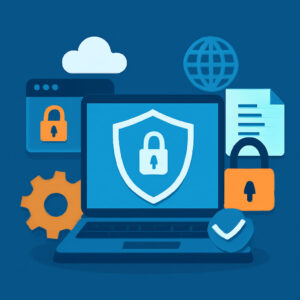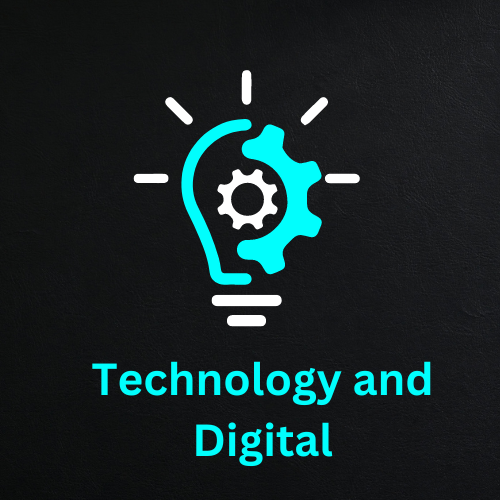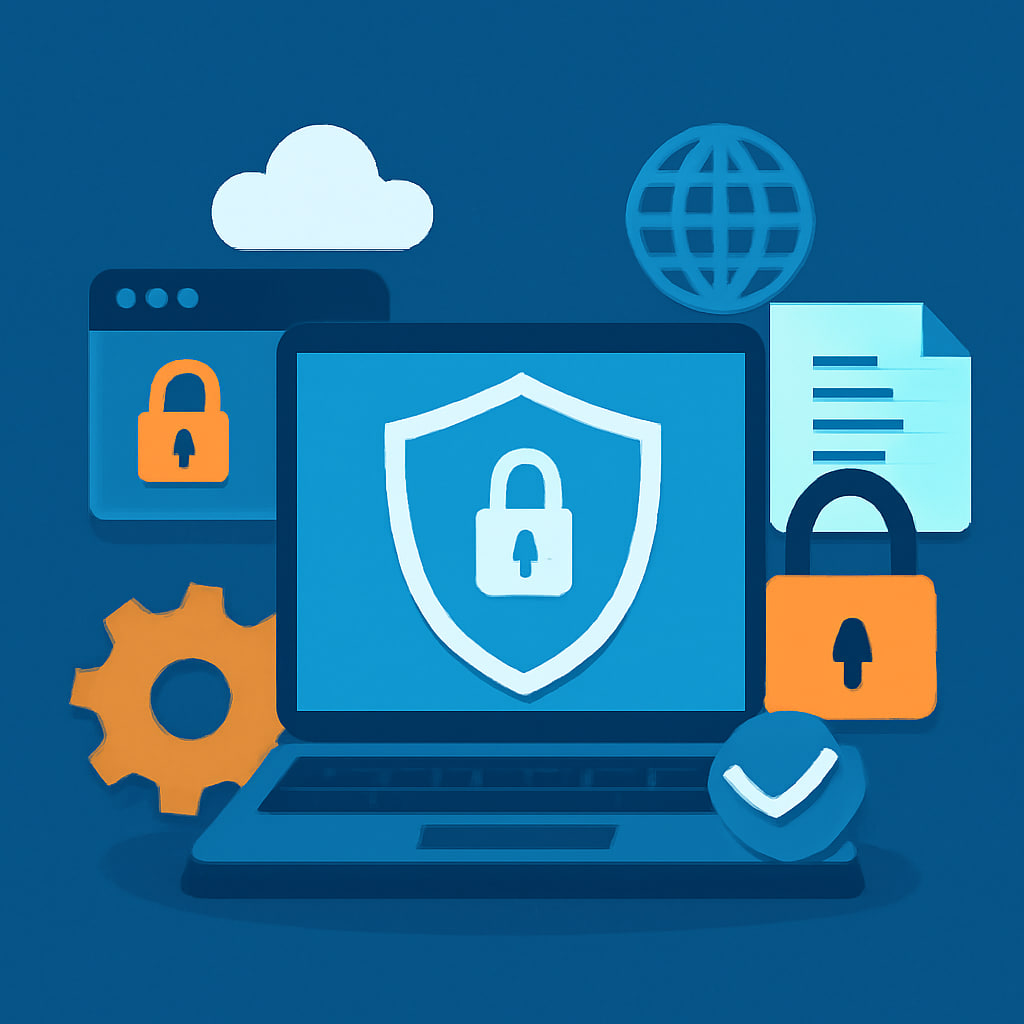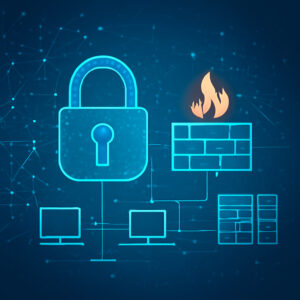Cybersecurity Best Practices for Today’s IT Landscape

In an age where cyber threats evolve daily, understanding and applying strong cybersecurity best practices is critical for any organization. It’s not enough to install antivirus software or a firewall. Modern IT environments demand layered defenses, proactive monitoring, and adaptive strategies. This article outlines the most effective approaches right now, examines their benefits and pitfalls, and offers practical steps anyone can take to raise security levels.
What Makes Cybersecurity Practices “Best” in 2025?
Not all security advice holds the same weight over time. What qualifies as a “best practice” must be resilient, adaptable, and validated by experience in current threat environments.
Key Characteristics of a Best Practice
- Defensive Depth: Using multiple layers (network, endpoint, identity) so failure in one layer does not spell total collapse.
- Automation & Orchestration: Reducing human error by automating routine responses and policy enforcement.
- Visibility & Monitoring: Maintaining real-time insight into system behaviors, logs, threats, anomalies.
- Resilience & Recovery: Planning for breaches, not just preventing them — including backup, incident response, forensics.
- Least Privilege & Zero Trust: Granting minimal necessary access and verifying continuously.
These traits help distinguish superficial security from robust, sustainable security. Practices that endure across evolving threats tend to embody those traits.
Core Cybersecurity Best Practices
Below are essential practices that address common threat vectors and reinforce defenses across layers.
1. Identity & Access Management (IAM) with Zero Trust Principles
Every user and system should be verified at each access attempt. Authentication should enforce multi-factor, adaptive risk scoring, and dynamic session controls.
- Use strong password policies, rotation, and phishing-resistant MFA.
- Enforce role-based access control (RBAC) and avoid shared accounts.
- Implement conditional access policies: location, device posture, time, risk signals.
In a hypothetical scenario, a contract worker logging in from an unrecognized device might be limited to read-only mode until device validation is confirmed.
Tip: Begin by auditing high-privilege accounts and enforcing MFA there first. Once successful, expand to all accounts.
2. Network Segmentation & Microsegmentation
Dividing infrastructure into segments limits lateral movement when breaches occur. Microsegmentation introduces fine-grained policy control within data centers, cloud environments, or container clusters.
- Segment by function: web server, database, internal tools.
- Use software-defined networking (SDN) or service mesh policies to enforce segment boundaries.
- Monitor and restrict inter‑segment traffic to only necessary flows.
Consider a breach within a web server zone. Proper segmentation ensures attackers cannot reach internal databases directly.
Tip: Start segmentation with your most critical assets (e.g., financial or personal data) and gradually expand to other zones.
3. Endpoint & Device Hardening
Endpoints remain among the most targeted assets. Strong endpoint controls greatly reduce attacker footholds.
- Deploy endpoint detection & response (EDR) agents that monitor behavior and isolate threats.
- Disable unused services and ports, enforce application whitelisting when possible.
- Keep firmware, drivers, and OS patches current to close vulnerabilities.
- Use device posture checks before granting network access (antivirus status, encryption, OS version).
In a scenario, an attack might attempt to propagate via SMB ports on an endpoint. If those ports are disabled or restricted, that route is blocked.
Tip: Automate patch deployment and schedule regular vulnerability scans on all endpoints, especially remote machines.
4. Continuous Monitoring, Logging & Threat Intelligence
Visibility into network and system behavior is the backbone of detection and response.
- Collect logs everywhere: network devices, endpoints, applications, cloud services.
- Use a Security Information and Event Management (SIEM) system or log aggregator with alerting.
- Integrate threat intelligence feeds to enrich alerts and flag known bad actors.
- Apply anomaly detection and correlation across logs to surface suspicious sequences.
Imagine a user account that logs in from a new geographic region, followed by privilege escalation attempts. A correlated alert can flag that pattern before damage occurs.
Tip: Establish clear alert thresholds and feedback loops. Review alerts regularly to eliminate false positives and fine-tune detection logic.
5. Data Protection & Encryption Everywhere
Protecting data in transit and at rest helps neutralize many attack vectors.
- Use TLS for all network traffic, including internal service calls.
- Encrypt sensitive data at rest (database, file systems, backups).
- Leverage tokenization, data masking, or format-preserving encryption for usage contexts.
- Manage keys securely (HSM, cloud KMS), rotate keys, and ensure least‑access for key systems.
As a hypothetical, backup files stored unencrypted could be stolen and exposed. If those backups were encrypted and keys separated, exposure risk would be minimized.
Tip: Use end-to-end encryption where possible and enforce TLS by default on all communication channels.
6. Incident Response & Recovery Planning
Even the best defenses fail sometimes. Having a tested response plan makes the difference between minor interruption and catastrophic loss.
- Create playbooks for common scenarios — ransomware, credential compromise, DDoS.
- Define roles, escalation paths, communications, forensic steps, and decision authorities.
- Implement backups with air-gapped copies, immutable storage, and regular restore drills.
- Review post-incident root cause, update controls, and document lessons learned.
One scenario: if malware is detected on critical systems, the plan might immediately isolate that segment, kick off backup restoration, and notify leadership and legal teams.
Tip: Run table-top exercises periodically and update plans based on new threat patterns or infrastructure changes.
Emerging Challenges & Trends in Cybersecurity
The IT threat landscape changes continuously. Some trends and challenges must be acknowledged for a forward-looking security posture.
Supply Chain & Third‑Party Risk
Vendors and software dependencies often introduce vulnerabilities. Trust in one supplier’s component can cascade risk across entire ecosystems.
Approach this risk by auditing vendor security, requiring SBOMs (Software Bill of Materials), and actively monitoring dependencies.
AI-Powered Attacks & Defensive AI
Attackers now use AI to probe defenses, generate phishing content, or adapt tactics. In parallel, defenders use AI to detect anomalies and automate response. Defender AI must stay one step ahead.
Zero-Day & Unknown Vulnerabilities
Because not all vulnerabilities are known in advance, defense must lean on behavioral and anomaly-based detection rather than signature-based alone.
Cloud-Native & Container Security
As workloads shift to containers and serverless, securing ephemeral environments is harder. Policies must follow workloads, not static hosts.
Privacy Regulations & Compliance
Data privacy laws (GDPR, CCPA, etc.) demand stricter control over data access, consent handling, and breach notification timelines. Security must align with compliance frameworks.
Steps to Start Strengthening Your Cybersecurity Posture Today
- Perform a Risk Assessment: Identify critical assets, likely threats, and current gaps.
- Create a Roadmap: Prioritize the best practices above based on risk, cost, impact.
- Start Small, Iterate: Pilot in less critical zones, validate effectiveness, then expand.
- Build Governance & Culture: Involve leadership, security champions, and education programs.
- Measure & Improve: Track metrics (mean time to detect, time to respond, number of incidents), refine continuously.
- Stay Current: Monitor threat intelligence, security news, and adapt controls as threats change.
Conclusion & Call to Engagement
Implementing cybersecurity best practices is a journey—not a one-time checklist. With layered defenses, continuous monitoring, identity-first thinking, and thorough incident planning, IT environments become significantly more resilient. Challenges remain—attackers evolve, supply chains remain vulnerable, and visibility gaps persist—but disciplined, adaptive practice builds strength.
Which practice would have the biggest impact if applied first in your environment? Choose one (IAM improvements, segmentation, endpoint hardening, etc.), design a pilot, and track outcomes. Share insights, surprises, or questions in the comments below—genuine discussion sharpens understanding for everyone.




